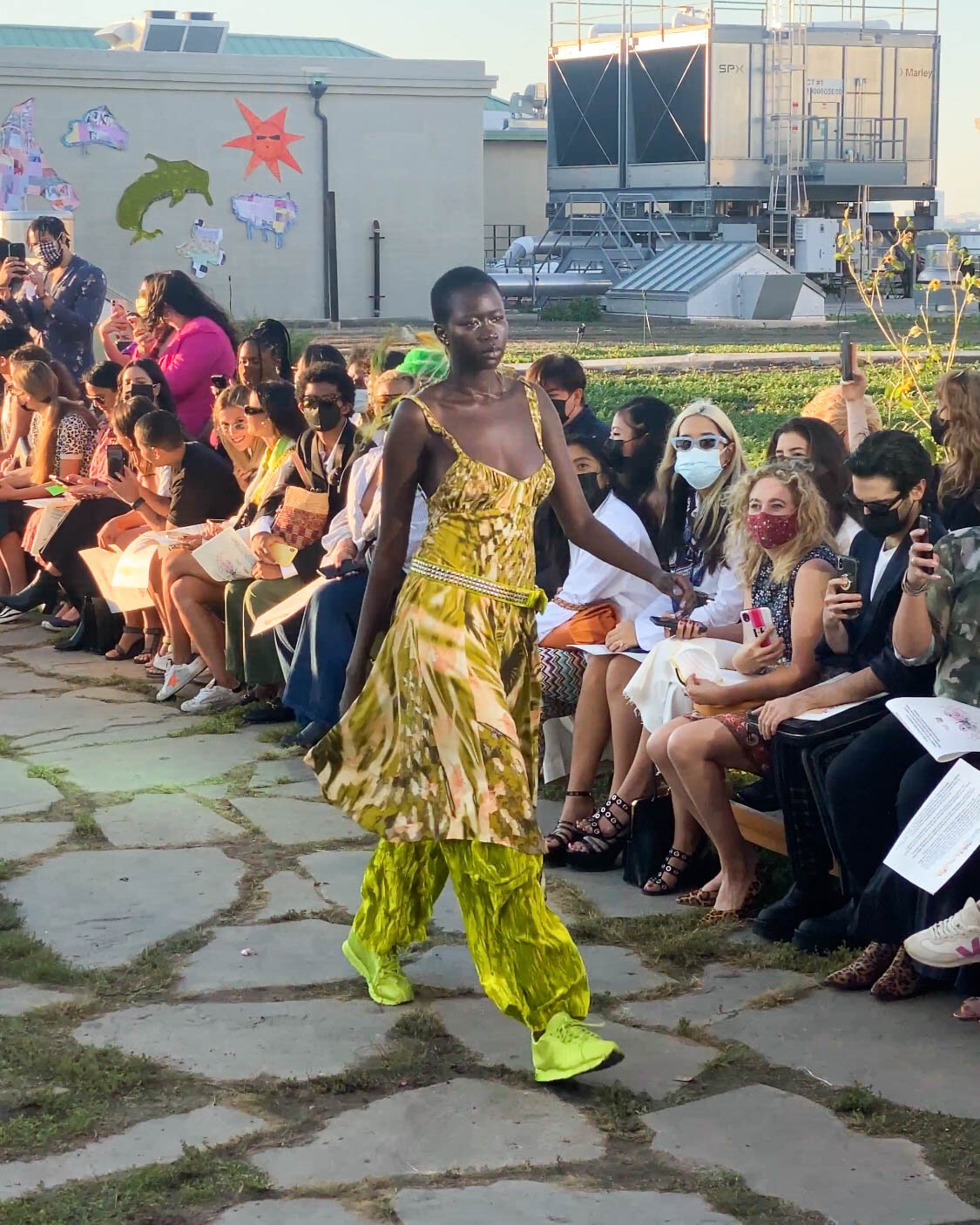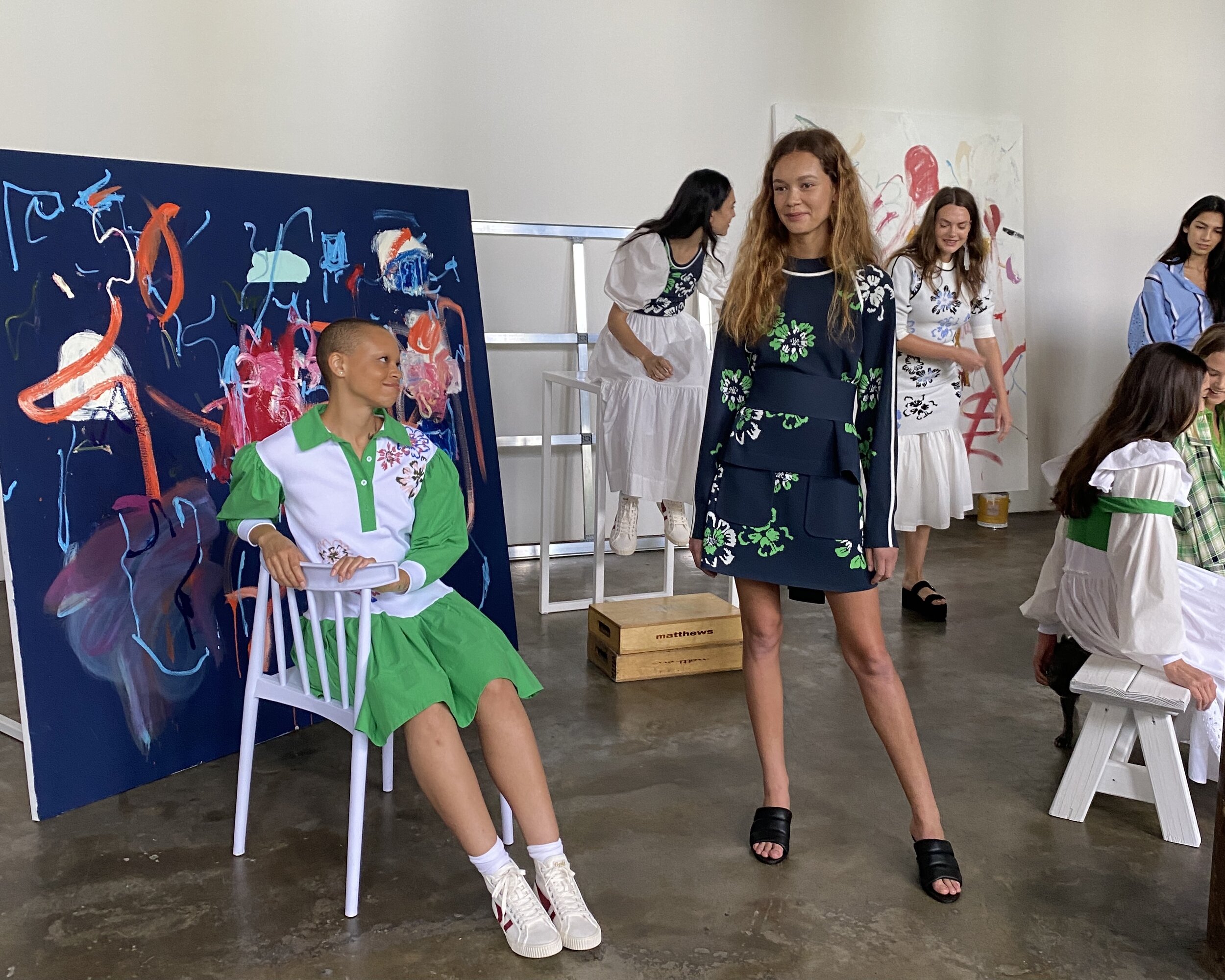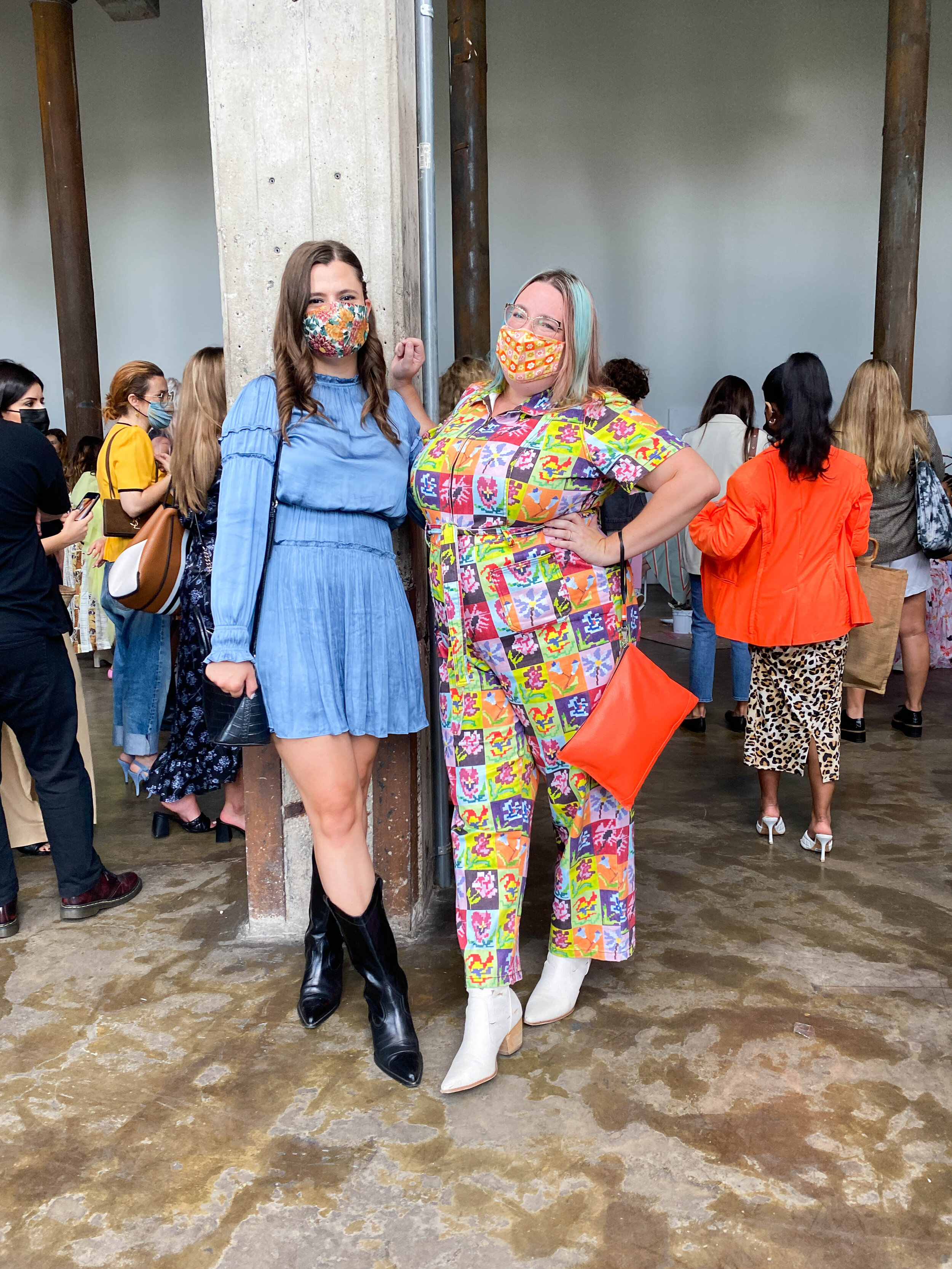What is the Future of New York Fashion Week?
In 2018, I wrote a blog post called New York Fashion Week is Broken: How Can We Fix It? It was a piece that mainly called out the decentralization and digitization of a days-long event that had previously occurred entirely in one place for a hyper-exclusive crowd of fashion industry leaders.
Today in 2021 it’s no surprise that bloggers, Instagrammers and now even TikTokers are known to attend fashion week and sit shoulder to shoulder (or socially distanced) with some of the top editors and fashion figures in the world. Attendees are not only willing but often happy to attend shows and events in Brooklyn (unheard of in previous years) or anywhere outside of the usual Spring Studios bubble for that matter.
I’ve been attending New York Fashion Week for nine seasons as an intern, editor, freelance writer, and fashion content creator. After everything that’s happened since I last attended an IRL show in February 2020, before the world changed forever, I’m asking the question: do we still need fashion week?
What is New York Fashion Week?
There are many different iterations of fashion week from men’s fashion week to haute couture week, but fashion week in New York most often refers to the week in February and the week in September where designers present their women’s ready-to-wear collections. AKA, the stuff you’re most likely to actually buy and wear.
How does fashion week work?
Each season designers will invite guests to attend presentations of their upcoming collections. The guests could be editors, buyers, fans and friends of the brand, influencers, or anyone else who they’d like. Getting invited to a show is considered a privilege and on top of that getting a highly coveted front row seat at a runway show means you’re someone who the designer considers important.
How do you get invited to fashion week?
Check out my other blog post with everything you need to know about scoring an invite to fashion week.
What is the importance of fashion week?
Originally, fashion week was only attended by editors and buyers so they could see the collections before they were ever available in stores and make decisions about what would be included in print issues of publications and what would be placed in different department stores. Slowly and then swiftly over the years, fashion week has turned into the chance for a designer to make a major splash on social media and gain notoriety, followers, and ideally also make sales.
Nowadays, fashion week is just as big of a deal for the attendees as they document the shows across their social channels and hope to get their picture taken running to and from presentations by street style photographers.
Tanya Taylor SS22 presentation
What has changed about NYFW over the years?
The better question might be, what hasn’t changed? New York Fashion Week used to take place in Bryant Park and was called different things depending on which brand was sponsoring the event like Olympus (early 2000’s) and Mercedes Benz, which was the title sponsor of NYFW for almost a decade until 2015.
In 2007, we were introduced to a little something called the iPhone and in 2010 a new app started appearing on the home screens of fashion lovers everywhere: Instagram. 2010 also marked a physical change for fashion week when the event moved from Bryant Park 20 blocks north to Lincoln Center.
I distinctly remember a New York Times article published by Eric Wilson in 2009 with the headline “Bloggers Crash Fashion’s Front Row” with a photo of BryanBoy and Tommy Ton sitting with their laptops in the best seats in the house, only a few feet away from Vogue’s Anna Wintour.
Even now where it’s common to see bloggers and content creators sitting in prime seats, it’s also assumed that editors who are given front row seats will also take a video or two for Instagram stories, as many of them have built up their own social media followings because of their affiliations with different magazines.
By 2011, some designers in New York were starting to incorporate live streaming of their shows into their fashion week game plans. Live streaming runway shows made more people feel included.
Starting around 2012, some designers opted to ditch the traditional runway format and show their collections as a presentation where viewers could walk through a space to view the clothes on models and get close up photos. Not to mention it was a chance to chat with their friends and colleagues and maybe even have a glass of champagne.
Presentations meant no seating charts and more capacity so it opened up fashion week to be a bit more accessible to say an editorial assistant, micro-influencer or random fashion lover hoping to get a glimpse at what was inside.
In 2015 fashion week moved from Lincoln Center to downtown Manhattan where Skylight Clarkson Square and Spring Studios served as the epicenters for a majority of shows. Some were sprinkled throughout other locations in the city and the decentralized nature of most shows and presentations has been the dominant format for the past few years.
Designers have also made strides, albeit on a small scale, towards more inclusive runways in terms of ethnic diversity and body type when it comes to casting models.
Just to note:
— Gianluca Russo (@G_Russo1) September 10, 2021
So far at #NYFW , Michael Kors, Coach, Laquan Smith, Gabriela Hearst, Maryam Nassirzadeh, Moschino, Christian Siriano, Peter Do, Prabal Gurung, Bronx and Banco, Markarian, Erigo, A. Potts, & Tanya Taylor have used plus-size or curve models.
And more are coming…
How did Covid-19 change New York Fashion Week?
Fashion week was the last big event I attended before New York City shut down in March 2020. In September 2020 and February 2021 there were some attempts at digital and even very intimate in person showings of new collections, but without a Covid-19 vaccine it was hard to justify the creative energy, overall expense, and frankly the health risk of trying to present collections as normal. Even with a vaccine though, it’s clear we’re still far from normal.
Some designers chose to take a well-deserved break and opted out of showing a new collection entirely, while influencers found creative ways to participate in the fashion week discourse from the comfort of their own homes.
Come September 2021 and fashion week in some ways seemed to pick up where it left off, with some adjustments. All fashion week events required attendees to show proof of vaccination to attend.
On top of that, I still personally chose to wear a mask to all indoor presentations, even though I am fully vaccinated.
The Daily Beast reported that capacity for the spring/summer 2022 presentations at NYFW was highly reduced compared to what it normally was—with most shows allowing between 150-200 guests max, whereas in previous seasons a runway show would typically host 500+ guests.
Glossy also reported that 27% of designers chose to show virtually this fashion week, including Tadashi Shoji which was the only digital presentation I tuned in for this season. Live streaming is not new to fashion week, but it was previously used in addition to a live runway show instead of in lieu of one.
In terms of overall trends I saw at the spring/summer 2022 presentations—beading, fringe, feathers, bright neon colors, and more styles that celebrate a return to getting dressed after a year in loungewear were playing on repeat across the different venues.
Leanne Marshall SS22 runway presentation
What does this mean for the future of fashion week?
Well before the Covid-19 pandemic there was chatter amongst fashion insiders (myself included) indicating the current format for fashion week needed to be updated. Whether it was to closer align with retail schedules, allow more people to experience the presentations live, or to create a better environment for designers and the attendees of shows to conceptualize, view, and experience each new season’s collections in a more thoughtful way.
It feels like just yesterday we were all collectively deciding NYFW as we knew it was over and here y’all are booking up your calendars to the max with shows and events again I feel so deceived 😩
— Lauren Alexis Fisher (@LaurenAlexis) September 7, 2021
Judging by the widespread adoption of digital events during the pandemic it seems likely that digital events and events incorporating augmented or virtual reality will become more common during fashion weeks in the future.
Most of all, it showed that the fashion industry can’t separate fully from the outside world. While fashion is an escape for many, it is also intrinsically connected to health, politics, and how we choose to live our lives each and every day.
After so many months away, attending this past fashion week made it clear we still need to improve the NYFW format. But most of all it gave me hope and happiness—attending events again, hugging so many friends I hadn’t seen in over a year and most of all getting to witness so much creativity and artistry up close.
While there is so much we can do virtually, there is something truly irreplaceable and dare I say *magical* about experiencing fashion week in real life that Nylon’s EIC Alyssa Vinngan summed up nicely in a tweet:
It’s the first night of NYFW which means that everyone walking through soho right now is dressed in their finest For You Page outfits.
— Alyssa Vingan (@alyssavingan) September 7, 2021
And because of that it’s hard to picture a world without fashion week anytime soon.
yours,
Austen
Other images from top to bottom: Collina Strada SS22 runway show, Leanne Marshall SS22 runway show, posing with Sarah of Curvily at the Tanya Taylor presentation, viewing the Tadashi Shoji SS22 presentation digitally from The Arlo Soho.







